Exploring Nikko and a hidden mountain town
Known as a sightseeing destination even centuries before the advent of modern tourism, the town of Nikko in Tochigi Prefecture continues to exert a powerful draw on visitors both for its gorgeously decorated temples and shrines, and as the gateway to the stunning vistas of the Nikko National Park. While the classic option of a day-trip from Tokyo can represent a great addition to a Japan itinerary with a minimal investment of time however, the surrounding area also has much to offer, from remote hot spring towns to spectacular mountain scenery.
For this article, I set out to demonstrate the kind of experience possible with a two night stay - in this case with two Kamenoi Hotels - replacing a fast-paced, cookie-cutter experience with something much more tranquil and ultimately rewarding.
Day 1: Yunishigawa Onsen
My first day began at Asakusa Station in Tokyo, from where I took a Limited Express Aizu-Tajima train north across the upper part of the Kanto Plain and into the mountains of Tochigi Prefecture. About two and a half hours later I arrived at Yunishigawa Onsen Station, although I still had a little further to go to reach the the hot spring town itself, located in a remote mountain valley some 20 kilometers north of central Nikko.
The station is unusual for two reasons: firstly, it features its own hot spring facilities, including a footbath located outside and free to use. Secondly, the train platform itself is located underground, with trains arriving via a steel girder bridge crossing over Lake Ikari.



Outside the station, I changed to a bus for a pleasant ride following the Yunishigawa River - part of a chain of lakes and rivers flowing from the Tochigi-Gunma prefectural border all the way to Tokyo - deeper into the mountains along a winding road, the surrounding hillsides carpeted in late fall colors and dazzling in the sunlight.



Jumping off the bus about 15 minutes later still a little short of the town itself, my first stop was at the Yunishigawa Water Village - a day-visit hot spring facility in a beautiful setting, beside a narrow, clear stretch of the river, with forested peaks leading off into the distance. Here, I enjoyed the first of several relaxing dips I would take during the course of the trip, with the local water - clear, alkaline and slightly mineral scented - leaving a definite silky trace on my skin.


With time to kill before my next bus deeper into the town, I took a brief stroll over the nearby Mizunogodaitsuri Bridge - an attractive suspension bridge completed in 2011, offering some nice views of the facility and its surroundings - before returning for a bite to eat at a pleasant little cafe attached to the bathhouse. For lunch, I ordered a plate of soba served with the local favorite of bandai mochi - mochi made from rice flour rather than the more typical crushed rice, served in a thin mackerel soup with mountain vegetables.


Arriving a little later close to my accommodation for the night, I first took a quick detour to the Heike no Sato, an outdoor museum of sorts where I learned more about the surprising backstory of this little mountain town.
The history of Yunishigawa Onsen, I discovered, is deeply connected with the story of the Heike - a warrior clan who rose to power towards the end of Japan's Heian Period (794-1185), only to be violently overthrown by their rivals, the Genji. In the aftermath of their defeat, many Heike clan members and their affiliates fled to form hidden communities in remote places around the country - of which Yunishigawa is one.


Here, the survivors eked out a simple, rural existence, making use of the local hot springs to recover from their wounds while carefully keeping a low profile, going so far as to give up on festivals and seasonal decorations to avoid attracting attention.
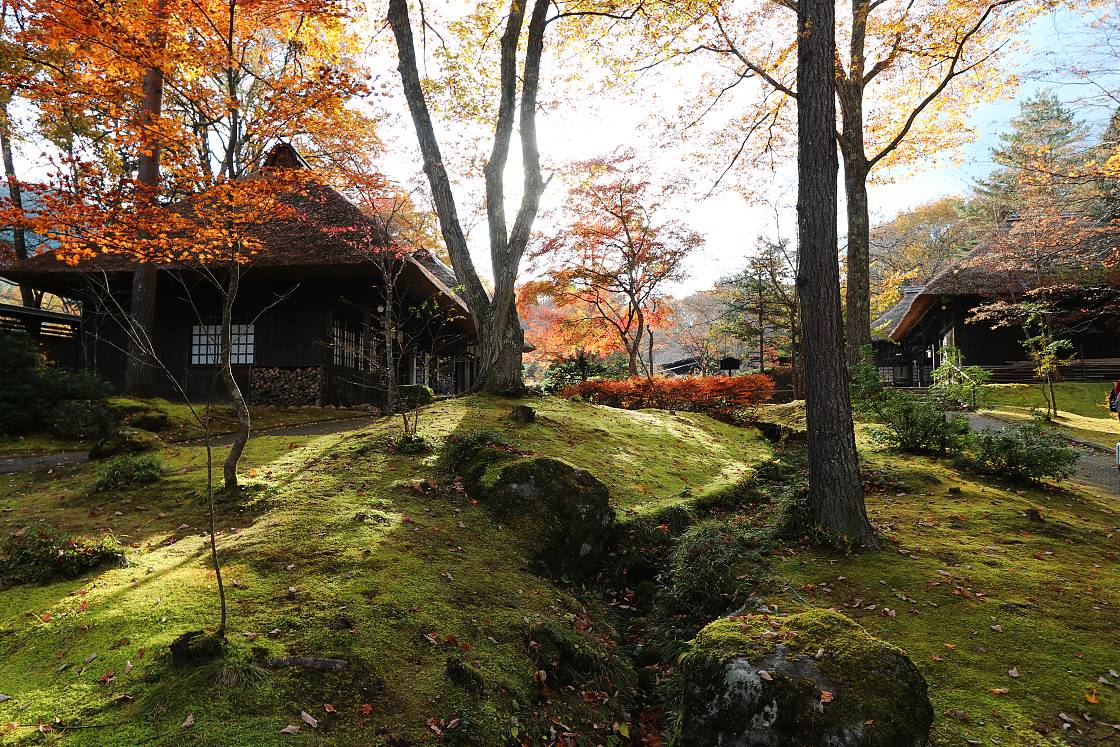
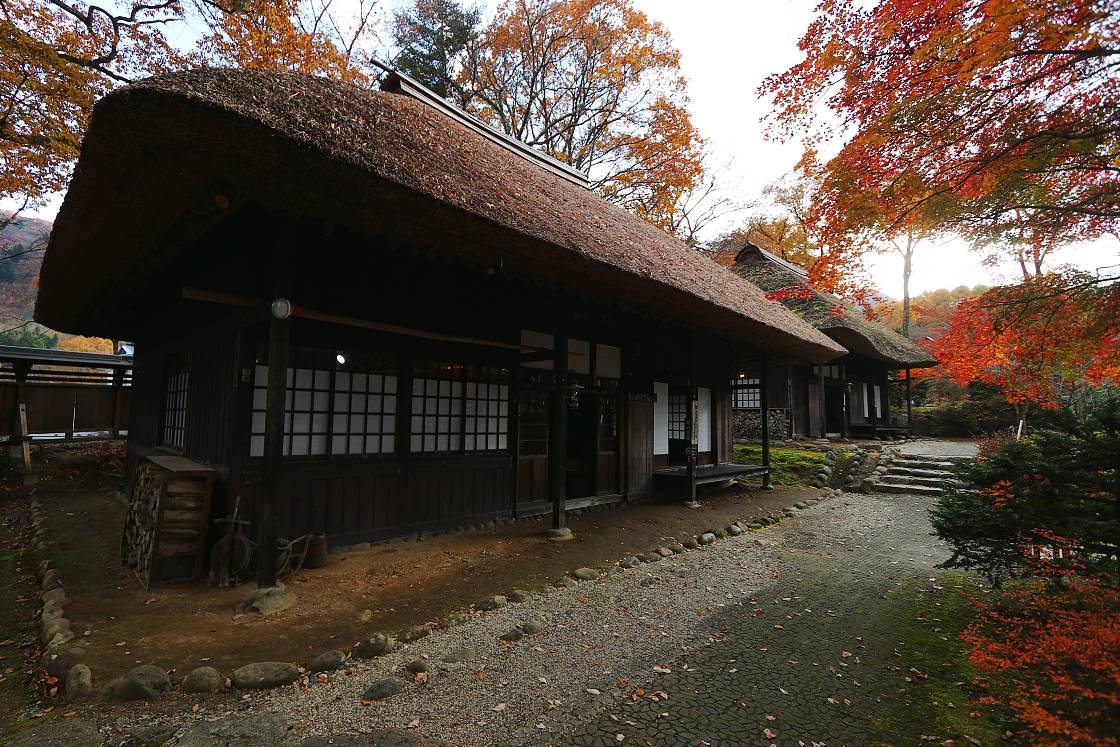
Inside the museum grounds, visitors can look inside a series of old thatched roof houses arranged around a mossy garden, each containing a mix of informative displays and historical items, from tools and other everyday items to antique swords, armor and clothing.
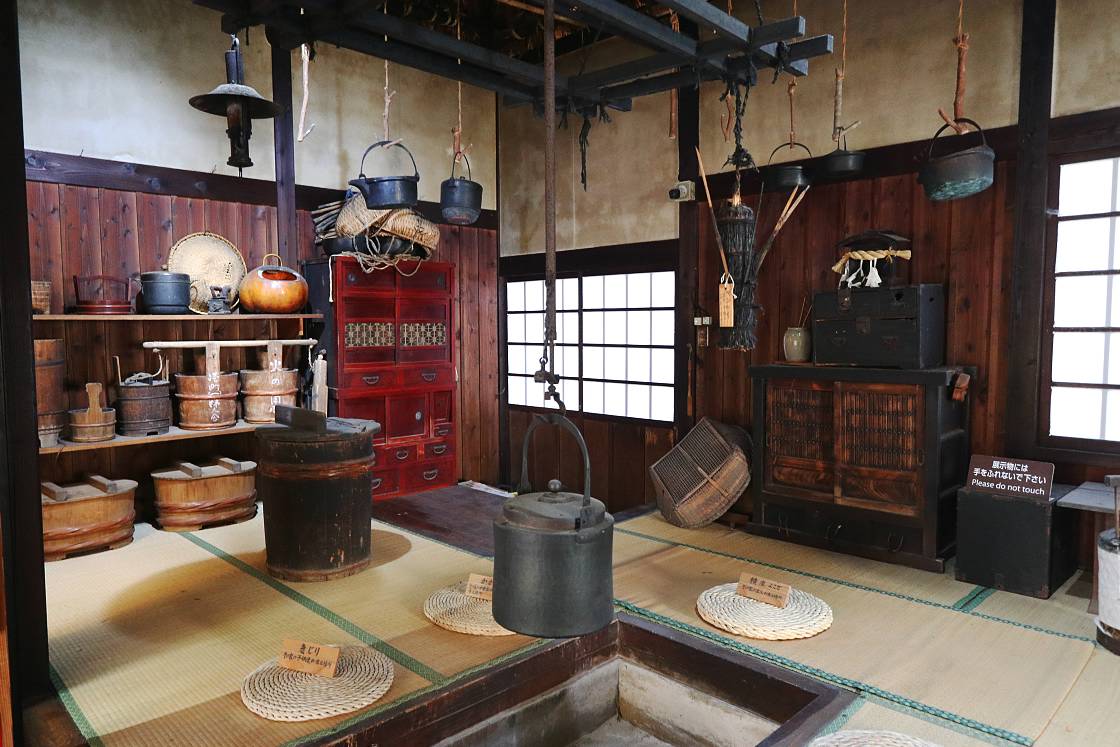

With my sightseeing for the day complete, it was time to check in at my accommodation for the evening, the KAMENOI HOTEL NIKKO YUNISHIGAWA ALL-INCLUSIVE RESORT - an all-inclusive hot spring ryokan balancing an attractive, modern look with a cozy, traditional feel, and dinner, breakfast, alcoholic beverages, and activities all included as part of the package.
One of the first things I noticed as I made my way inside was the design of the lobby - with nicely carved wooden furniture and a wood burning stove creating a rustic, inviting atmosphere, coupled with a clever use of space to create relaxing little nooks to settle into. Another nice touch was the guest lounge - a semi-separate space with comfy chairs and a range of complimentary drinks - from fruit juice to a well-stocked wine and sake dispenser.



My room for the night was one of the hotel's superior western-style twins, an unpretentious but very comfortable space with nice furnishings and an attractive view out onto the leafy grounds, with the thatched roofs of Heike no Sato peeking into view beyond.
After settling in, my next stop was at the baths for a second, longer dip in the local waters before my evening meal. Just like my previous experience, the water was clear, silky to the touch and very hot - the perfect antidote to another long day on the road.


I rounded off my evening with a special all-you-can-eat buffet served in the hotel's large, open restaurant. Leaning into the area's pleasantly rustic atmosphere, each table featured its own sunken hearth, called an irori, while the menu was designed around the theme of satoyama - a concept describing humans coexisting peacefully with nature.
The menu featured a range of popular countryside dishes - bandai mochi, wild fish, dengaku, vegetables, meatballs, local chicken with a secret sauce - all cooked on skewers over the charcoal-fired hearth. Other highlights included a venison hotpot unique to the Yunishigawa area, freshly made onigiri with locally produced rice with sujiko, minced chicken and tortoiseshell eggs, and the Satoyama Vegetable Salad with its emphasis on natural flavors.

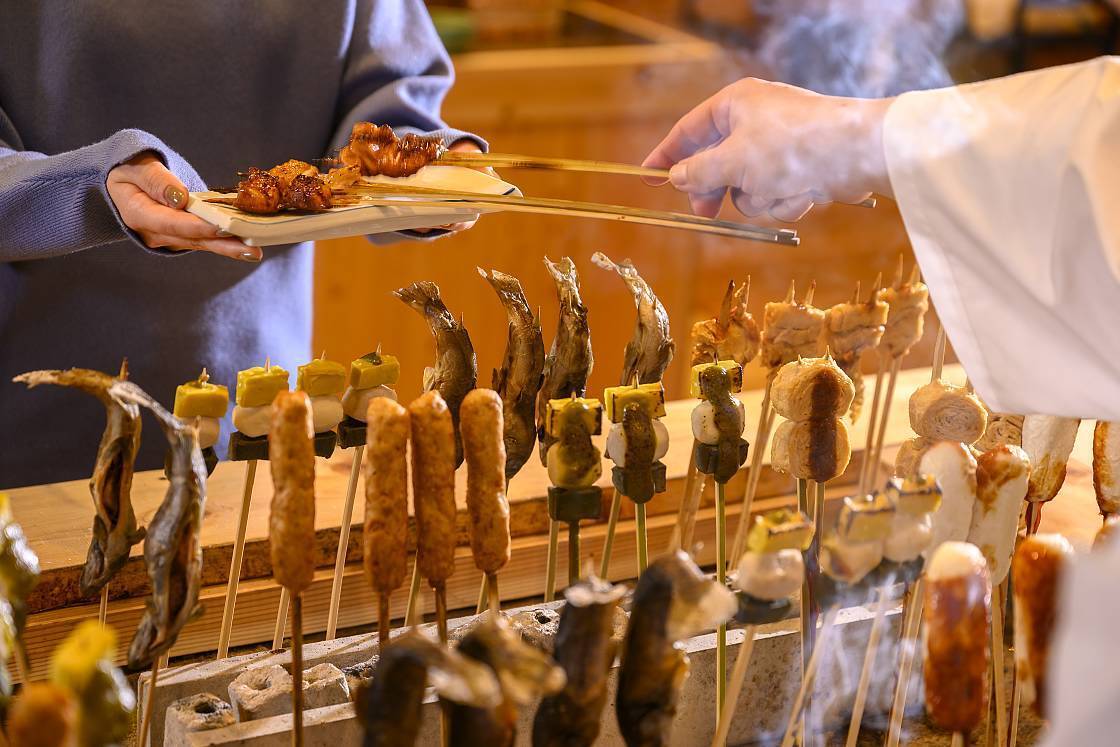

Day 2: Nikko and Okunikko
My second day began with an early start and a second visit to the dining room for a traditional breakfast. In addition to a selection of small bowls giving guests the chance to try bitesize portions of local favorites like Nikko yuba or soy curd, the menu prominently featured dishes made from local Tochigi eggs, like dashimaki - a kind of rolled omelette cooked in fish stock - made on the spot and served piping hot. Another highlight was the chicken paitan rice porridge - a mild and nourishing dish made with a milky chicken bone broth.

Ready for the day ahead, I took the hotel's own shuttle bus - available on weekdays at no extra charge - back along the winding mountain road to Yunishigawa Onsen Station. From here I took three Tobu express trains to Tobu Nikko Station - a journey of just under an hour, with two easy changes at Kinugawa Onsen and Shimo-Imaichi stations. Leaving the station, I jumped on a local tourist bus heading west out of the town to my first visit of the day at Nikko Toshogu - part of a spectacular complex of temples and shrines, and the mausoleum of Shogun Tokugawa Ieyasu, founder of the Tokugawa dynasty and one of the key figures in the unification of Japan.
First constructed in 1617 on a much more modest scale, Nikko Toshogu grew into the large and extravagantly detailed complex it is today over the course of multiple renovations by Ieyasu's descendants, in particular his grandson Iemitsu, himself interred just a short walk away at his own, rather less showy mausoleum called Taiyuin.


Today, visitors to the site can see a whole series of beautifully decorated and immaculately preserved buildings, culminating in the mausoleum itself sited within a tranquil forest of tall cryptomeria trees. Even with the crowds the complex continues to attract, there is something magnificently serene about the place, and every visit seems to reveal some new, unseen detail hidden within the intricate patterns criss-crossing its architecture.


Leaving the shrine complex behind, I began to thread my way back through the larger precinct and down to the main road, from where another tourist bus brought me close to the shore of Lake Chuzenji in the Okunikko area, taking about 40 minutes.
Here, my next stop was at the Kegon Falls, the largest of several famous waterfalls in the Okunikko area and the only outlet for the waters of nearby Lake Chuzenji on their way to the Oshiri River. Standing at just under 100 meters in height, the falls are located within a striking natural amphitheatre formed by lava flow, adding to its majestic appearance.

In order to get the best view, I took an elevator down to the bottom of the amphitheatre, where a paid, split level observation platform is positioned directly in front of it. From here, visitors can really get a sense of the power of the water slamming continuously into the rocks and filling the air with spray. Although I was a week or two late to enjoy the full effect, the site is especially magnificent in autumn when red and orange foliage also seems to cascade down from the upper ridge.
With visitors packed into the connecting tunnel, it took me quite a bit longer to make my way up and out of the falls than it had to descend into them, but in no time at all I was back once again on a tourist bus for a 20 minute ride along the shore of Lake Chuzenji for my next stop - the also spectacular Ryuzu Falls.
Formed from two parallel cascades rushing 210 meters along a series of terraces in the Yukawa River before it joins Lake Chuzenji, its name describes the head of a dragon - a reference to its serpentine form and powerful aura.


After a few moments to look at the two-sided drop itself, I took a quick 300 meter detour upriver to take in the view from further up. Although the famous autumn colors alongside the river had long since faded, still there was something powerful and invigorating about the sight.

Before moving on, I paused at the nearby Ryuzu no Chaya rest stop for a quick bowl of spicy pork soba noodles. Due to its plentiful access to very pure water, Nikko is often said to boast the perfect soba-making conditions, and today around 100 restaurants in the area offer their own take on the classic staple, made almost entirely from buckwheat.
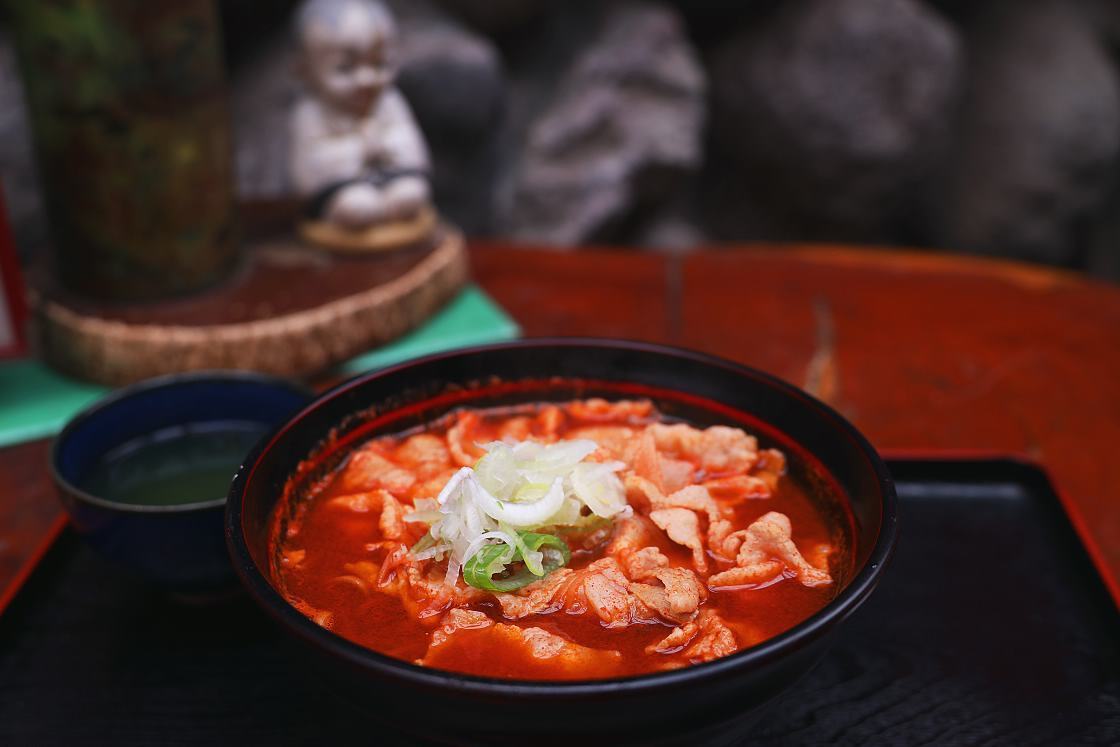
Feeling re-energized and extremely full, it was time to for the next leg of my bus relay deeper into the Okunikko area, where I next made a brief stop at the Senjogahara Marsh. Sitting at an elevation of around 1,400 meters - making it one of the highest marshlands in Japan's largest island of Honshu - the area is home to over 350 species of plants and animals and is a registered internationally important wetland under the Ramsar Convention.
The marsh is said to be especially beautiful in June for its alpine flowers and in September to October when the grass ignites with vivid fall colors, but even at the time of my visit in mid-November there was a strange, desolate beauty to the landscape.


My last, short bus journey of the day took me from the Senjogahara Observation Deck to the little hot spring town of Yumoto Onsen in just over five minutes. Here, just a few steps from the shores of Lake Yunoko, my final sightseeing stop of the day was at the Yunodaira Marsh - the fountainhead of the mineral-rich water that feeds the 20 or so local hot spring inns.

Making a slow circuit of the boggy area via a series of narrow planks, I could easily spot signs of geothermal activity, from the bubbles rising in little pools and traces of mineral color in the ashy mud, to the faint smell of sulfur lingering overhead. Especially interesting were the little wooden structures, which I later discovered contain the pumps that carry the naturally heated water into the many local baths.



With the afternoon just beginning to give way to evening, it was time to get indoors. Fortunately, my accommodation for the night - the Kamenoi Hotel Okunikko - was just a few steps away, directly overlooking the lake. Not unlike its sister hotel in Yunishigawa Onsen, this turned out to be a smart, if unflashy building, with a cozy atmosphere that instantly put me at ease.


Waiting for me was another comfortable and spacious room with fresh looking decor and a nice view facing towards the lake. Keen to experience the same waters I had just seen bubbling up from the ground in such an atmospheric setting, I made a quick change of clothes and set off immediately for the public baths on the ground floor.

These turned out to be very pleasant, with a slightly rustic look well suited to the locale, but the real star of the show was the water itself - high in mineral content, with a definite sulfury smell and a thick, milky color quite unlike anything I had seen before. Taking a long and thorough soak, my tiredness melted away, replaced by a lingering warmth that seemed to last for hours.


Already feeling very relaxed, it was soon time to head to the hotel's dining area for a grand, buffet-style dinner, where I brought my two days to a close gorging on delicious local favorites like rice with tofu skin, Yamame trout from nearby mountain streams and pork steak from Nikko, all of it delicious, and cooked in front of me on an open grill.

Discover More
- Nikko Official Travel Guide
- KAMENOI HOTEL NIKKO YUNISHIGAWA ALL-INCLUSIVE RESORT
- KAMENOI HOTEL OKUNIKKO
Closing periods
Kamenoi Hotel Okunikko
From Sunday, January 5, 2025 to Monday, March 31, 2025
*Closing period varies from year to year, so please check the official website.
Kamenoi Hotel Nikko Yunishigawa
From Sunday, January 5, 2025 to Thursday, January 30, 2025
*Closing period varies from year to year, so please check the official website.

